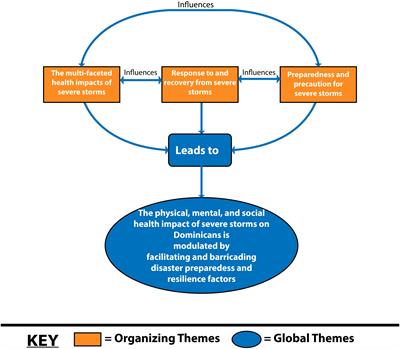The lived experiences and perceptions of middle-aged adults in Dominica who have survived severe stormsa qualitative exploration
The Eastern Caribbean island of Dominica has experienced diverse negative effects from the North Atlantic hurricane season, including deadly storms like Hurricane Maria in 2017.

Vulnerability is increased by geographic location, SIDS status, and ecosystem characteristics. A variety of negative health effects including stress and anxiety are caused by powerful storms.
The perspectives of middle-aged (the "sandwich generation") survivors in this post-storm milieu are understudied. This phenomenological qualitative study describes the perceptions of middleaged (35 -55 years) Dominicans, purposively recruited with gatekeeper assistance from communities stratified according to four natural hazard vulnerability categories designated by the Climate Resilience Execution Agency for Dominica (CREAD), regarding their lived experiences in the context of severe storms. Data was collected between June and August 2022, using primarily Zoom-based semi-structured, individual interviews (12 of 13), guided by the principles of saturation and maximum variation. Verbatim interview transcripts were thematically analyzed with constant comparison using an ATLAS.ti-supported hybrid deductive-inductive coding frame. Reflexivity and contact summary sheets were used to minimize bias. Ten females and three males from diverse CREAD vulnerability and socio-demographic backgrounds were recruited. Data condensation yielded three organizing themes: i) "The diverse health effects of severe storms"; ii) "Response to and recovery from severe storms"; iii) "Preparedness and precaution for severe storms".
These themes encapsulated the health impacts of severe storms on Dominicans and elucidated the role of facilitating and barricading resilience factors. Severe storms produced direct and indirect mental, social and physical health impacts on middle-aged Dominicans, including anxiety, and burnout. Participants used faith-based, tangible communitybased support, and emotional mechanisms to cope and demonstrate resilience. Better risk communication and early warning systems would improve population readiness. Persistent dispirited attitudes toward storm preparedness among some participants suggest need for targeted methods to enhance community involvement in disaster planning, including traditional approaches like 'coup-de-main" (self-help).
Read the full article at the original website
References:
